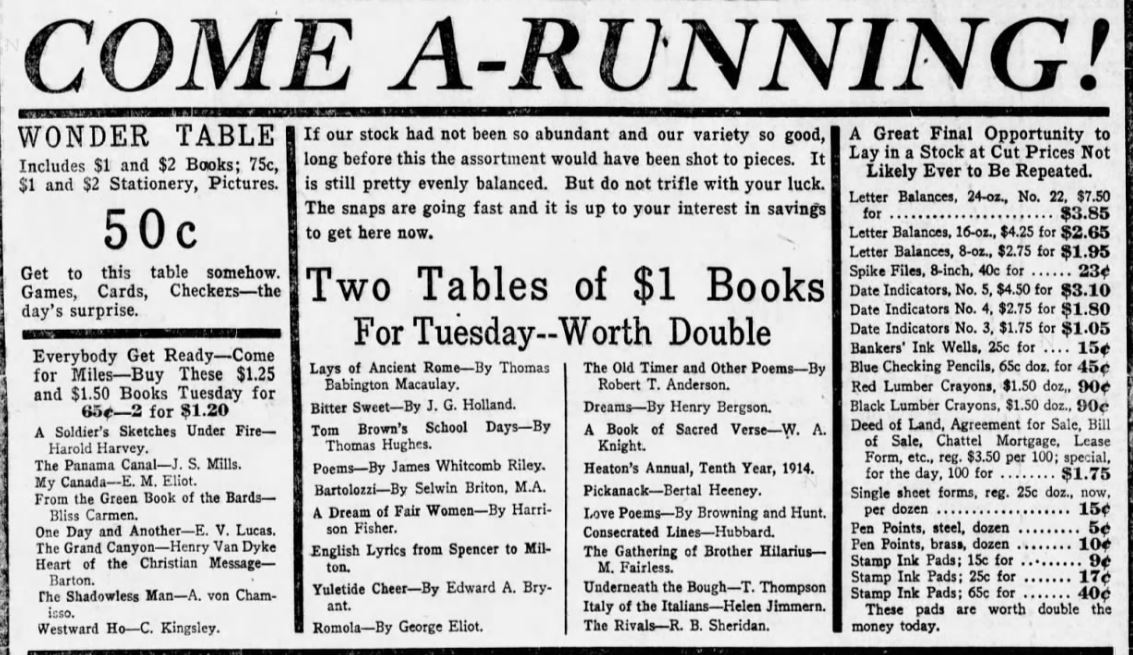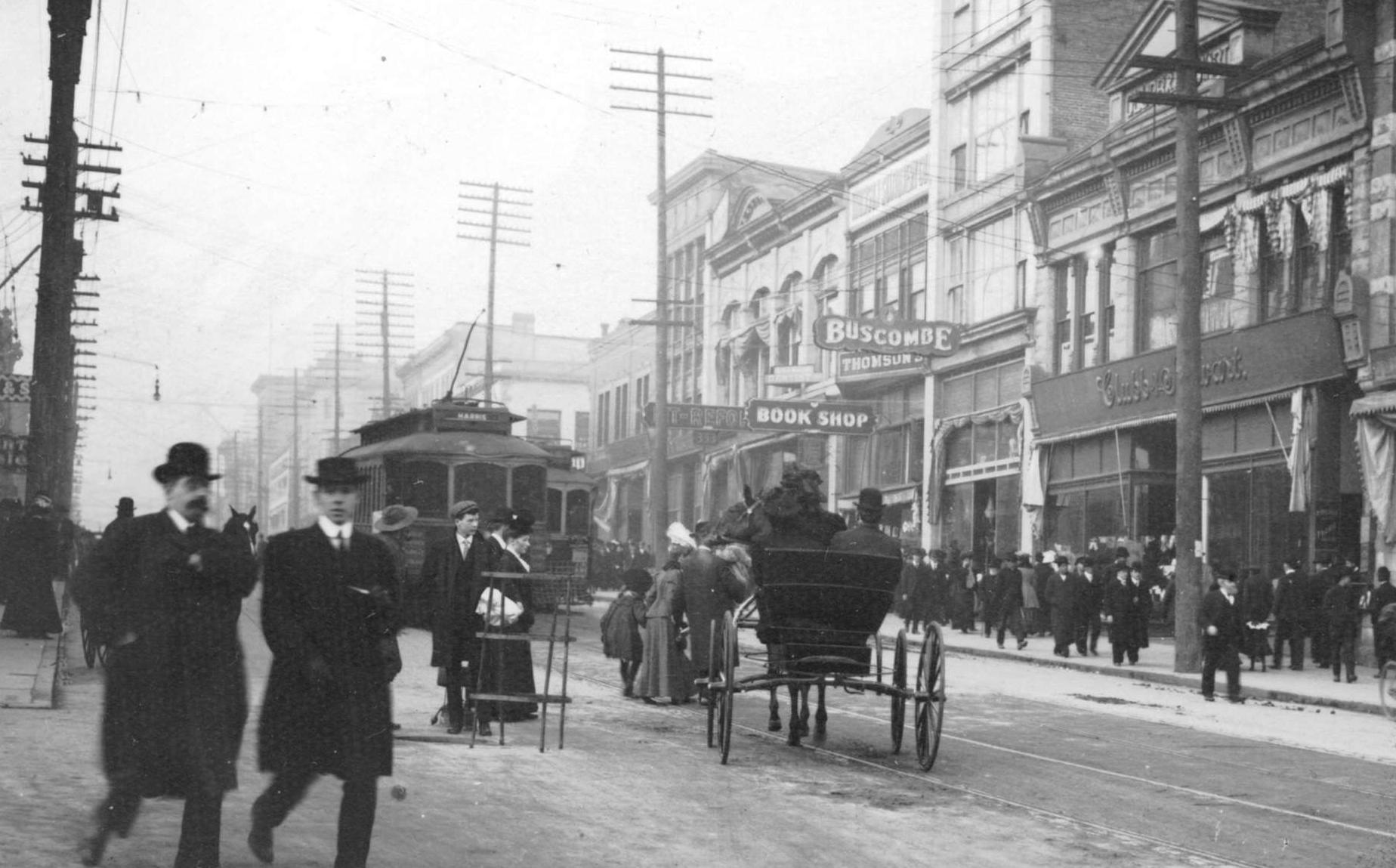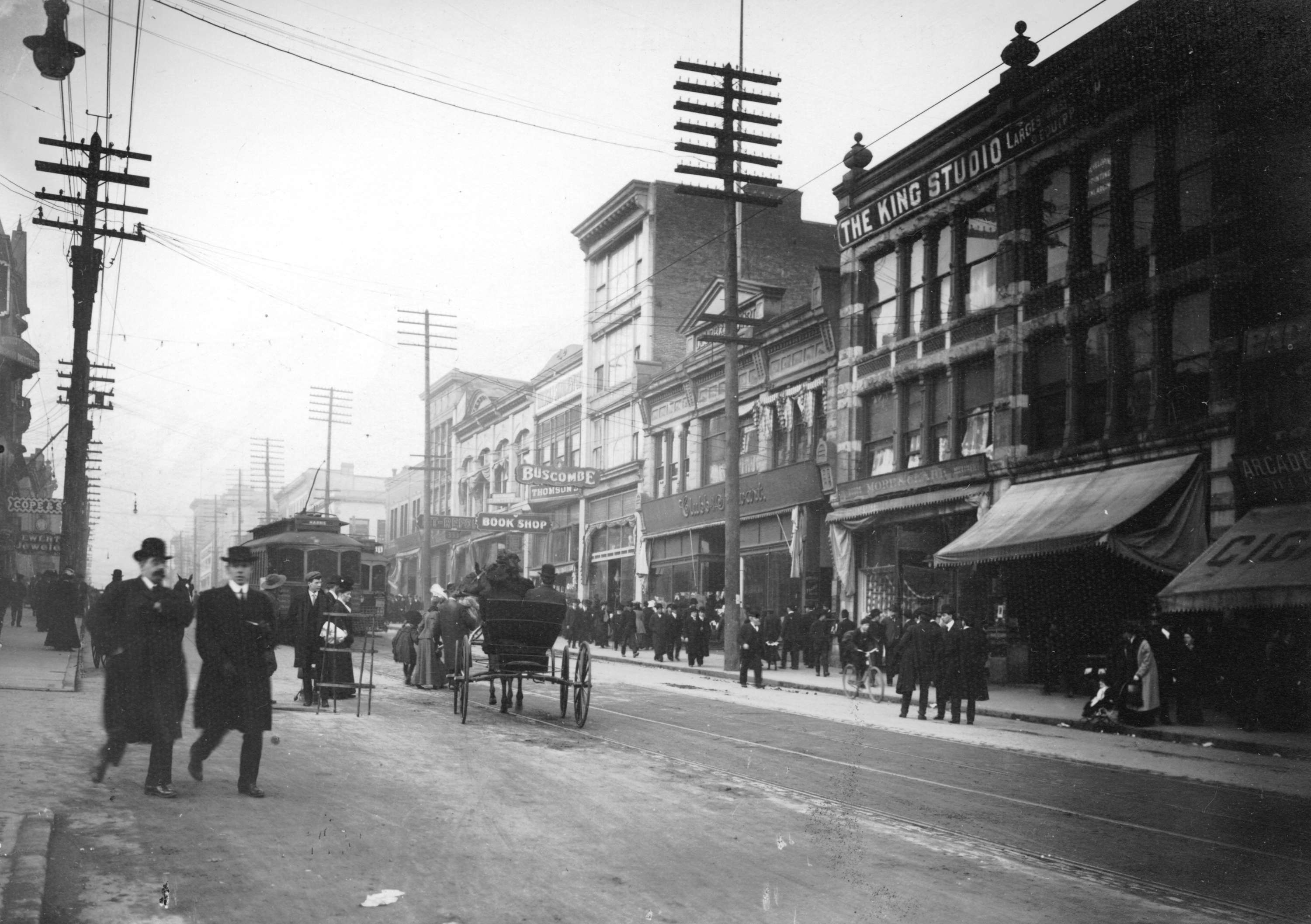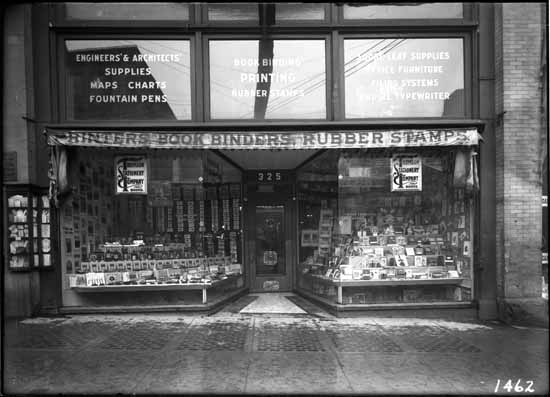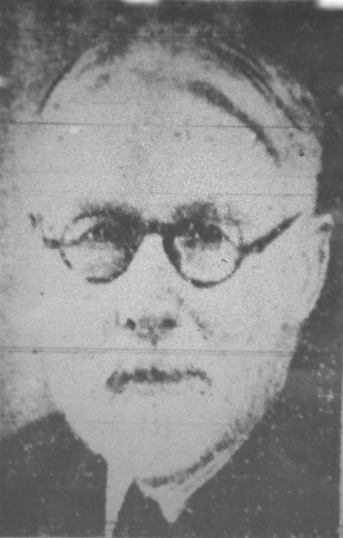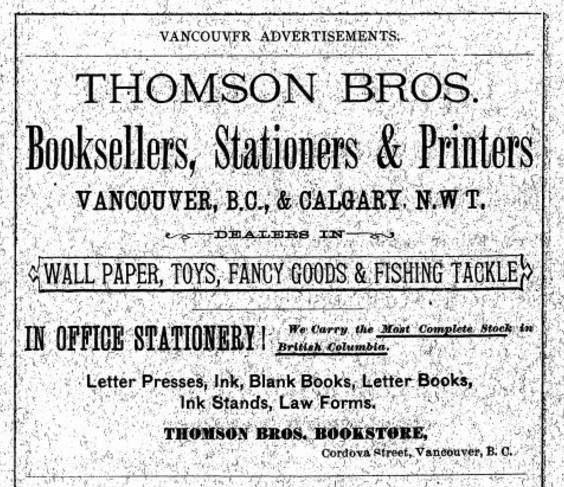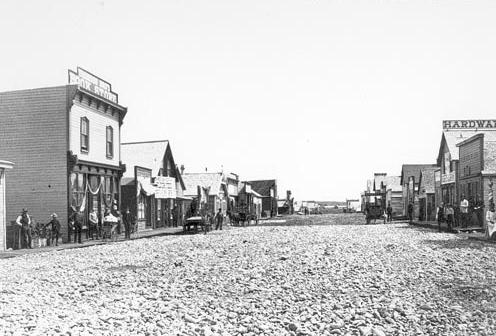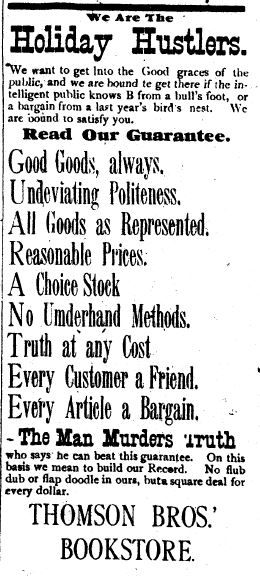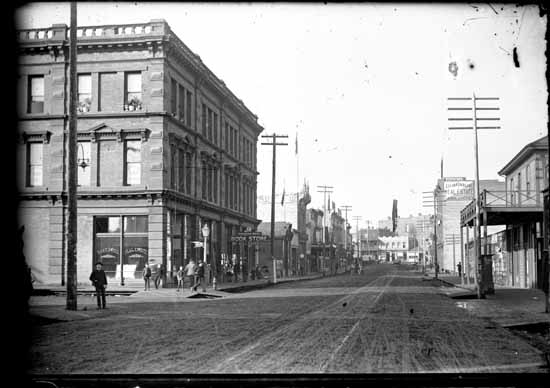I wrote last time about the rise of Manfred Gaskell’s bookselling mini-empire: as of mid-1914, he owned two Gaskell Book & Stationery stores in Vancouver and a branch in New Westminster, plus Thomson Stationery’s main operation in Vancouver and a branch in Victoria.
At the height of his business boom, Gaskell’s business equity amounted to $120,000 (1).
But now, let’s turn to the bust.
It’s hard to say whether a dampening of business during the war years was the cause, or if he was just plain over-extended, but Gaskell’s mounting cash flow challenges in 1916 are clear in letters held at the City of Vancouver Archives (3).
When Gaskell bought Thomson Stationery from James and Melville Thomson back in 1908, he hadn’t bought the company’s building at 325 Hastings Street. Instead, the Thomson brothers had retained ownership of it, and Thomson Stationery had agreed to pay the Thomson estate a monthly rent.
By the middle of 1916, Thomson Stationery had fallen into arrears on its rent obligations, and it seems that loans to its sister Gaskell firm were the cause.
“It is of course evident that the fortunes of Thomson Stationery Co. are to a large extent wrapped up with those of the Gaskell Book & Stationery Co.,” wrote the trustee for the Thomson estate to the financial head of Thomson Stationery on June 16, 1916.
“I am naturally anxious to know what prospects there are for the recovery from the Gaskell Book & Stationery Co. of the large sum which has been advanced to this business.”
Thomson Stationery owed $1,145 in rent to the Thomson estate in June 1916. By February 28, 1917, the amount had ballooned to $10,965.
Although the letters indicate that the Thomson estate gave the company some concessions, evidently they were not enough for Manfred Gaskell to keep everything afloat.
In May 1917, creditors applied to the BC supreme court to wind up both Thomson Stationery Co. and Gaskell Book & Stationery Co. (4). Assets of $100,000 for Thomson Stationery and $17,500 for Gaskell Book & Stationery were offered for sale (5).
With theatrical flair, the company also ran full-page ads to bring customers in for a massive going-out-of-business sale:
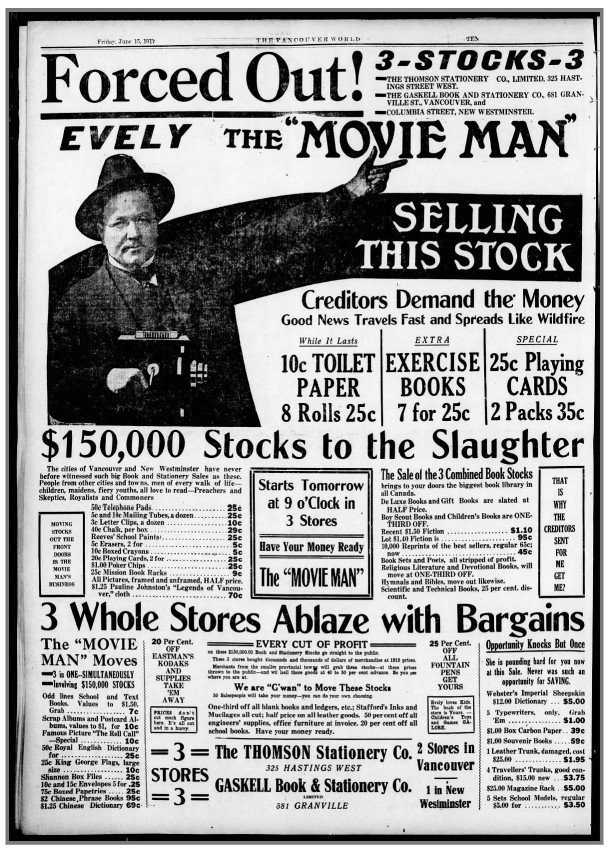
In August, forced to clear out of his main store at 679-681 Granville, Gaskell moved up the block to 649 Granville to sell the remainder of his stock (6).
Two months later, John S. Ireland, one of Gaskell’s former managers, bought out the stock and took over the 649 Granville location (7).
Meanwhile, Gaskell applied under the War Relief Act for protection against one of his creditors, the Bank of Hamilton, for claims of more than $35,000. His application stated that he had joined the military ranks and was therefore entitled to relief, but the judge denied his plea. “You will have some difficulty in convincing me that this man has been mobilized if he is walking about without a uniform on,” the judge said (8).
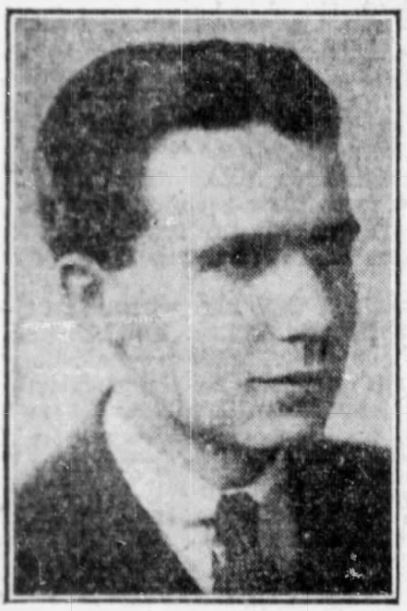
In 1922, reportedly due to ill health, Gaskell returned to eastern Canada (he had been born in Owen Sound, Ontario). He became the Montreal manager of McAinsh and Company, then later moved to Toronto, where he was associated with several publishing firms (9).
When he died in Toronto on December 11, 1949, at the age of 76, he was survived by three children: Eric, Ian, and Margaret, all living in Ontario (10).
Evidently inheriting his father’s literary genes, Eric Gaskell was secretary of the Canadian Authors Association for several years before joining the Royal Canadian Navy during the Second World War. When he died in 2002, he was said to be “a proud Canadian with a passion for his country’s history, art and literature”—qualities we might imagine he shared with his bookselling father, Manfred (11).
Notes
(1) Vancouver Daily World (October 11, 1917): 10.
(2) “Live News of the Stationery Trade,” Bookseller and Stationer (October 1914): 44.
(3) The correspondence about Thomson Stationery’s rent owed to the Thomson estate is at the City of Vancouver Archives, file AM54-S17-M9390.
(4) “Big Stationery Houses Assign,” Vancouver Daily World (May 4, 1917): 8.
(5) “Businesses for Sale,” Province (June 2, 1917): 20.
(6) Vancouver Daily World (August 3, 1917): 17. Taking Gaskell’s vacated premises at 681 Granville was the newly formed Vancouver Stationers Ltd., two principals of which were formerly with Thomson Stationery: Walter Hagel and H. Whitehead. Oliver Weber, the third principal, was formerly with Young & Kennedy in Calgary and Edmonton. Vancouver Daily World (September 1, 1917): 20.
(7) American Stationer and Office Manager, vol. 82 (1917): 14. Ireland would soon take on a partner by the name of James K. Allan, another former Thomson Stationery employee. The firm of Ireland and Allan remained at the 649 Granville Street location until 1967. Province (November 29, 1918): 19; Vancouver Sun (December 26, 1967): 26.
(8) “War Relief Act Does Not Apply,” Vancouver Daily World (October 11, 1917): 10.
(9) “Manfred J. Gaskell Dies in Toronto,” Ottawa Journal (December 12, 1949): 9; “Manfred J. Gaskell: Publisher Helped Canadian Authors in Early Editions,” Globe and Mail (December 12, 1949): 32.
(10) “Manfred J. Gaskell Dies in Toronto,” Ottawa Journal (December 12, 1949): 9.
(11) “Obituary: Eric Fleming Gaskell,” The Gazette (September 4, 2002): 56.
